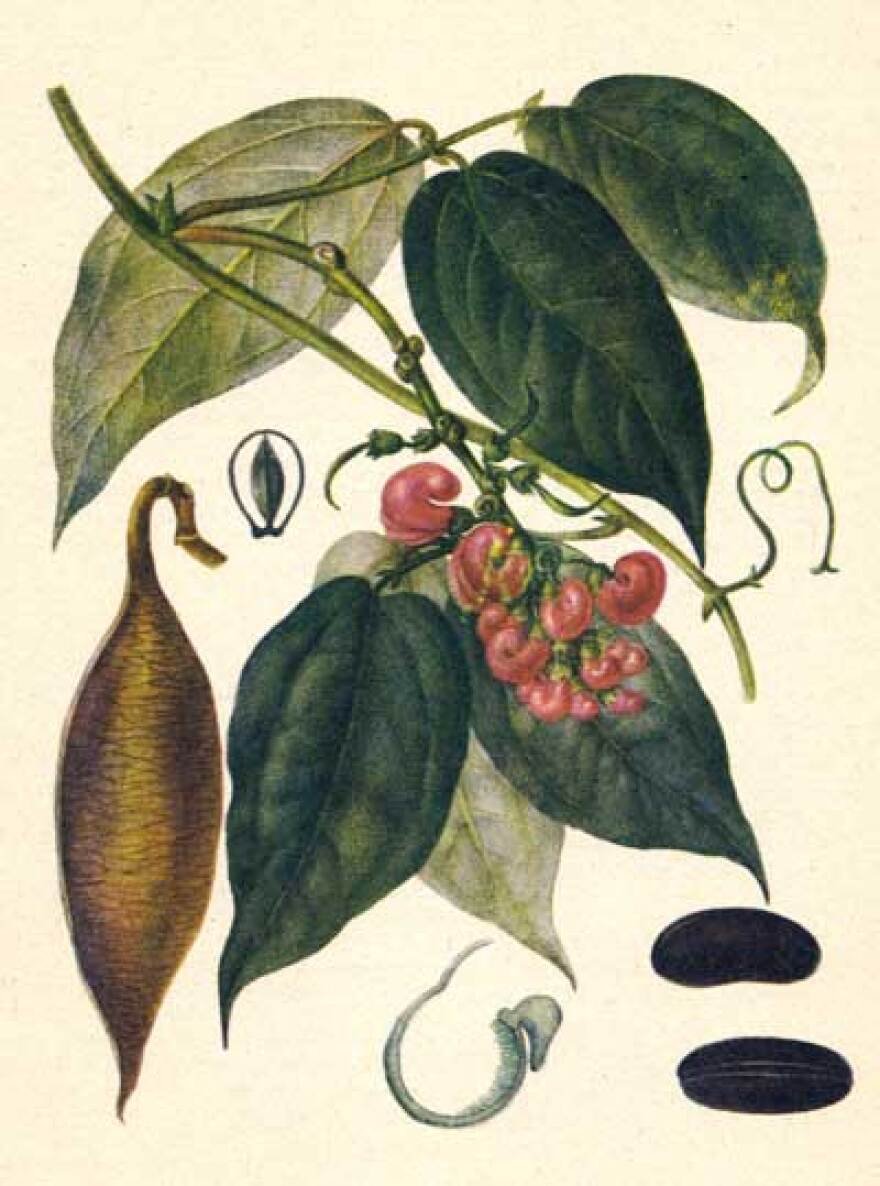Episode 33: Witch-Killing Ordeals & A Botanical Juror - The Calabar Bean
Hello and welcome back to another episode of Rooted! This week we are digging into a plant from western tropical Africa known for it’s use in everything from witch trials to modern medicine - the Calabar Bean.
The Calabar Bean, or Physostigma venenosum- also commonly known as the Ordeal Bean, is a member of the fabacea family, with famous cousins like peas, gorse, chickpeas, and many many more!
It is native to what is now Nigeria, and prefers loose, well draining soil, and plenty of moisture. Like most of its fabaceae family, it really isn’t picky when it comes to soil, but does prefer bright, indirect sunlight if it can get it.
This tall perennial climber can reach up to about 5o ft tall, with a growth pattern like any other bean or pea- stretching its tiny tendrils up to reach tippy top of…. Really whatever it can climb. It gets its scientific name physostigma because of the funny little growth that can be found in the center of its pink, heart- shaped flowers. The growth is said to resemble a beak, and while at first glance one might assume it’s completely solid (like most stigma tends to be) this one is completely hollow..
But that’s not exactly what makes this plant notable… instead, this plant’s claim to fame are the Faba bean sized dark brown seeds it produces in groups of three- nearly indistinguishable from other commonly eaten beans grown in its native region, the beans of the calabar bean are actually highly toxic, and have been used through history as a means to both save and take lives.
The Efick people of Old Calabar- what is now Nigeria, turned to this plant for ages as a sort of judge and jury in their criminal and witchcraft trials. See, because the bean is highly toxic, but can also cure a variety of ailments, it was believed that the bean was actually able to determine if a person was guilty, bewitched, or possessed. The idea here was that anyone who was truly pure of soul wouldn't actually die from eating the bean, but would instead vomit out whatever impurities or toxins may have cast doubt on their character. On the other hand, a person who truly was guilty or impure would die, as the bean wouldn’t be able to cleanse them, and would instead kill them.
With that idea in mind, it’s easy to see how in the age of folk magic, you could assume that you had stumbled upon a perfect way to keep peace and remove human error from the judicial process. However, in practice, this obviously couldn’t have been further from the truth. The Poison that is contained in the so-called “ordeal bean” is known as Physostigmine and it is contained inside the flesh of the bean. It protective sheath around the bean actually prevents the poison from being released until it’s already being processed in the digestive tract…this meant that those who swallowed the bean whole were less affected by the poison because they wouldn't start feeling the effects until it was already on it’s way out….however, for those who didn’t know the trick, or were maybe on the more nervous side- they may have chewed the bean- cracking that protective layer, and allowing the toxins to enter their bloodstream much earlier in the digestive process- resulting in a painful death filled with nausea, vomiting, vision loss, and seizures.
While calabar bean has gained a reputation as a prolific poison, it’s also been known to heal a variety of ailments from stomach issues to glaucoma
In stomach issues, it, not unexpectedly works as a diuretic, with Physostigmine affect the movement of signals between muscles and nerves in many parts of the body In the bowel, it will also induce peristaltic contraction and decrease water absorption from inside the colon, providing relief from constipation.
Physostigmine also helps to prevent the worsening of glaucoma because of the way it impacts those muscles and nerves in the eyes.
When it comes to physostigmine though, there is too much of a good thing. Because it inhibits the breakdown of the neurotransmitter acetylcholine, this can cause a build up in the brain, which leads to nausea, paralisyas, and even death.
To avoid such devasting side effects, modern medicine has found a way to synthisyze Physostigmine for use in the drug of the same name- helping to ensure that the drug is given at a safe dosage and under careful watch of trained medical professionals. For this reason, I can’t suggest calabar bean as the next tums, but I CAN vouch for the ordeal bean being an AMAZING name and conversation starter.
While you aren’t walking away from this episode with a new herbal remedy OR plant head to kiss on your next hike, I hope you at least added a few new fun facts to your arenal fro your next party, and got a good survival tip for if you ever find yourself in a good old fashioned witch trial.
That’s all i’ve got for this week, but I’ll catch you next week with more tall tales and true facts about the plants that grow around us. See you then!

